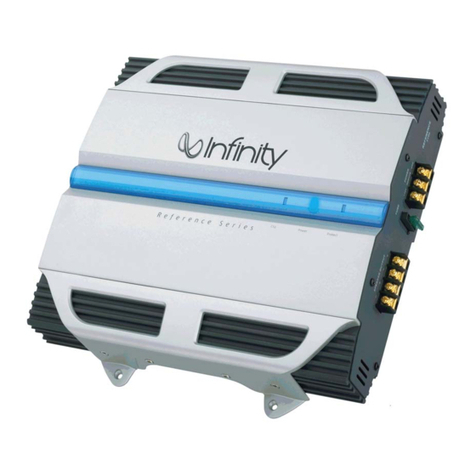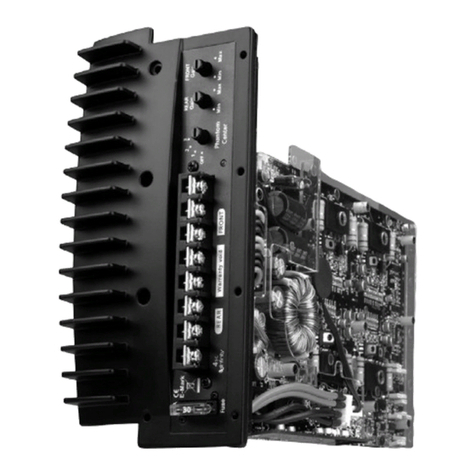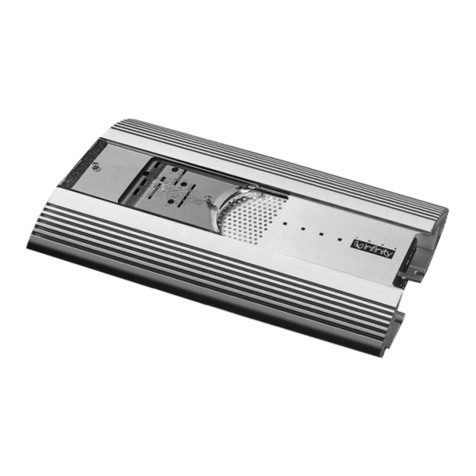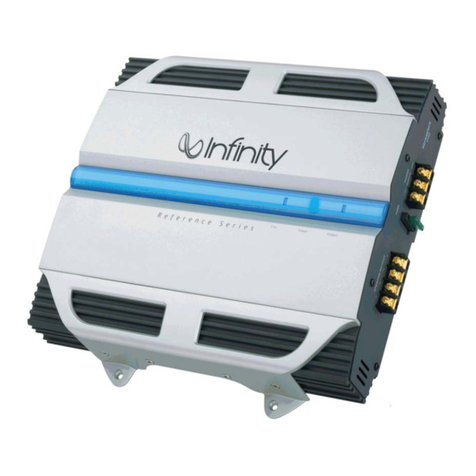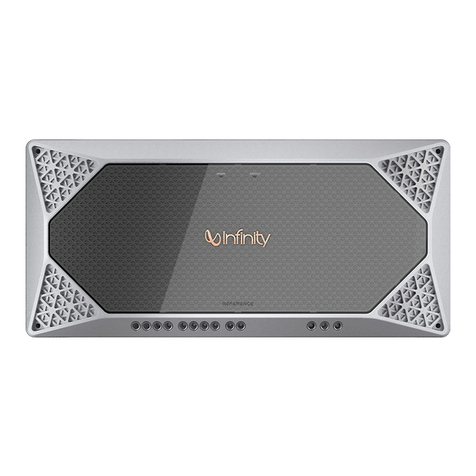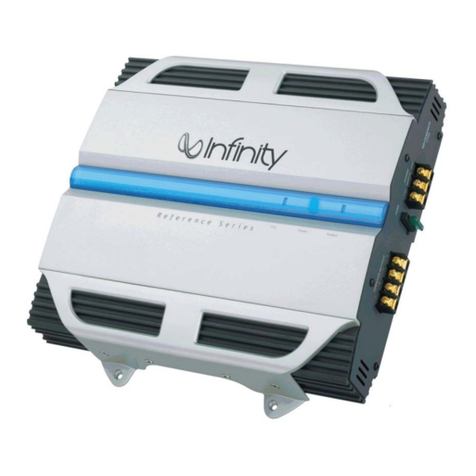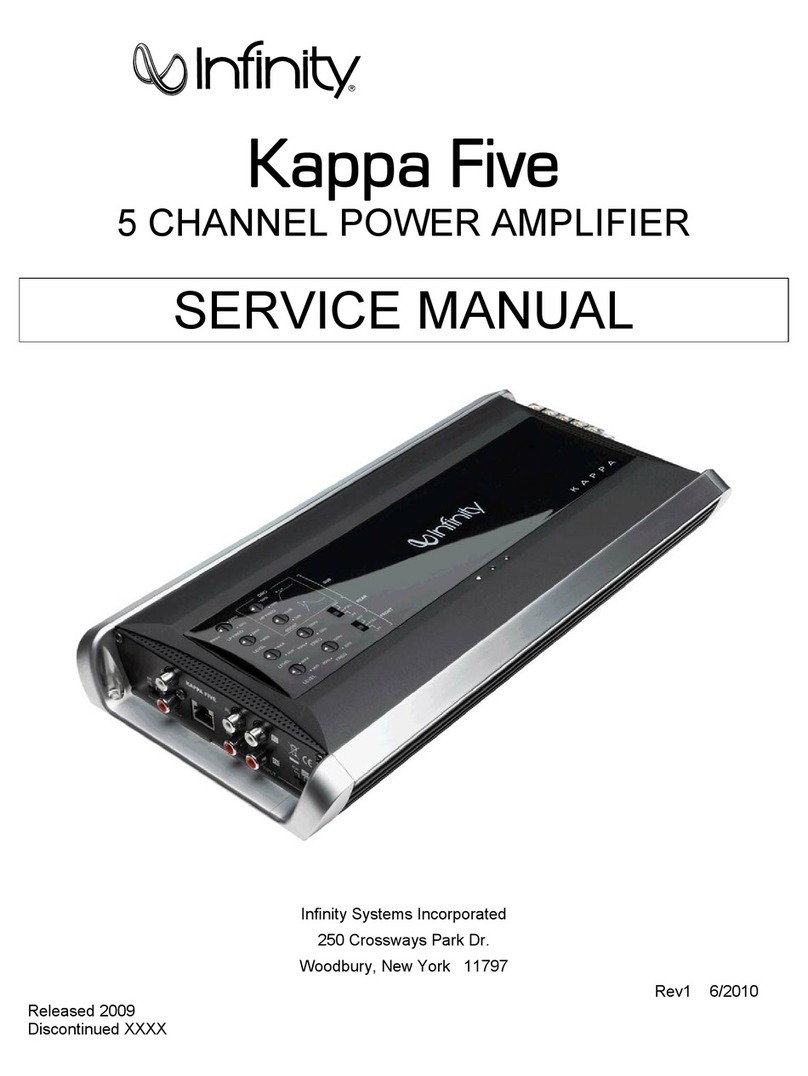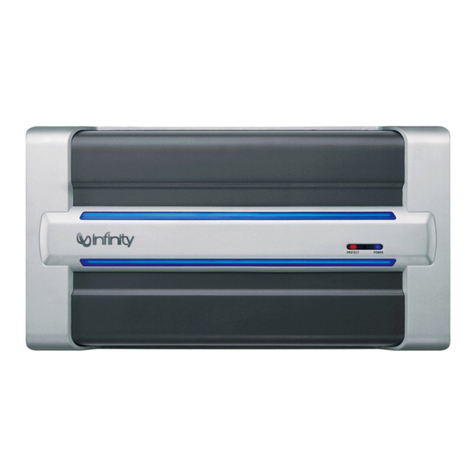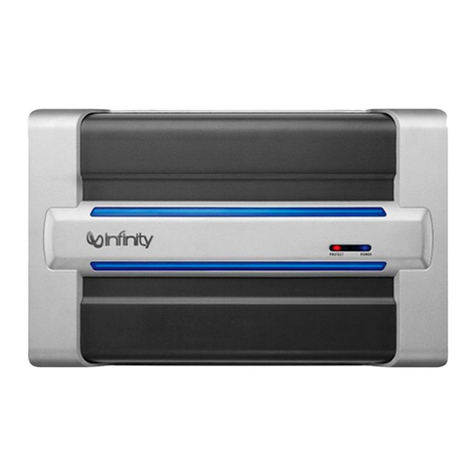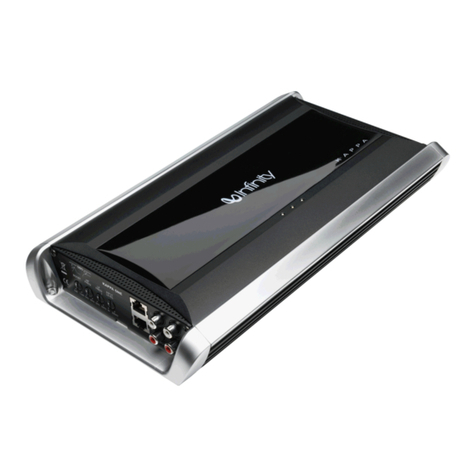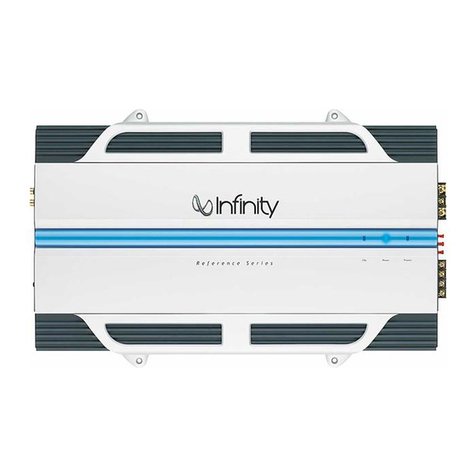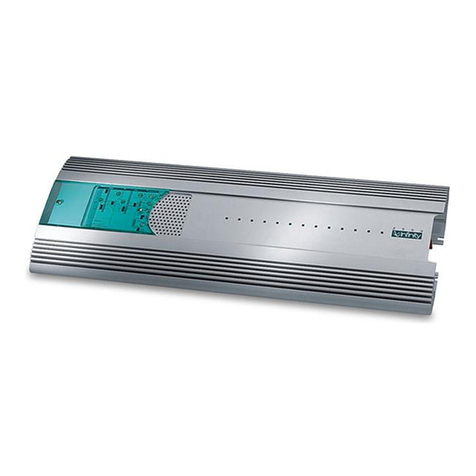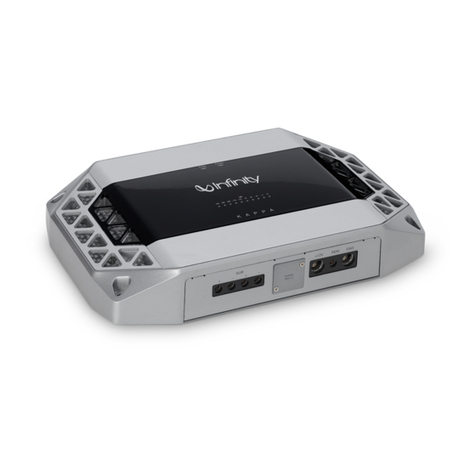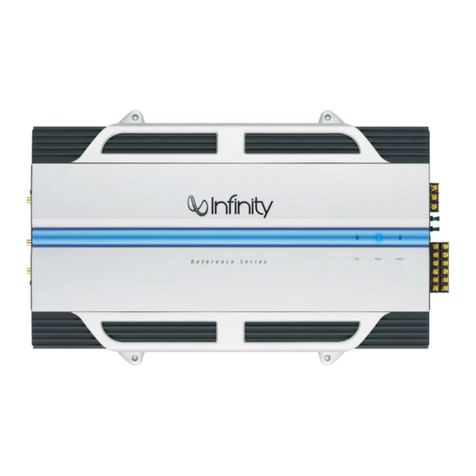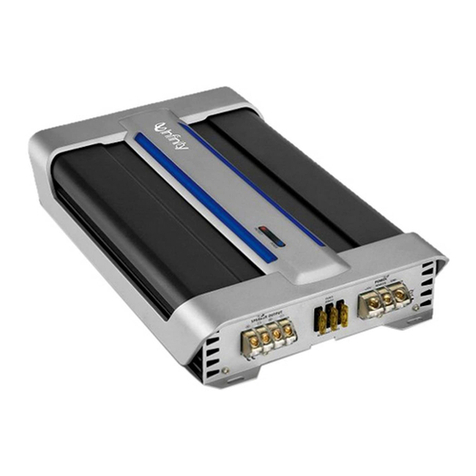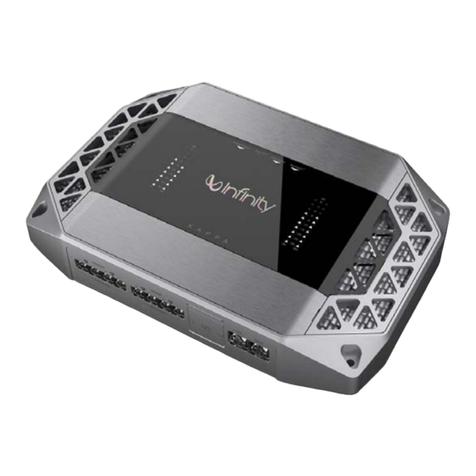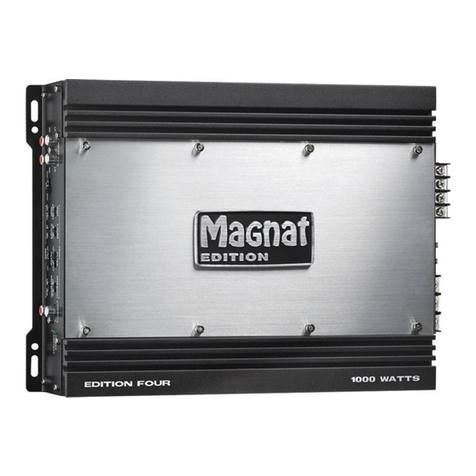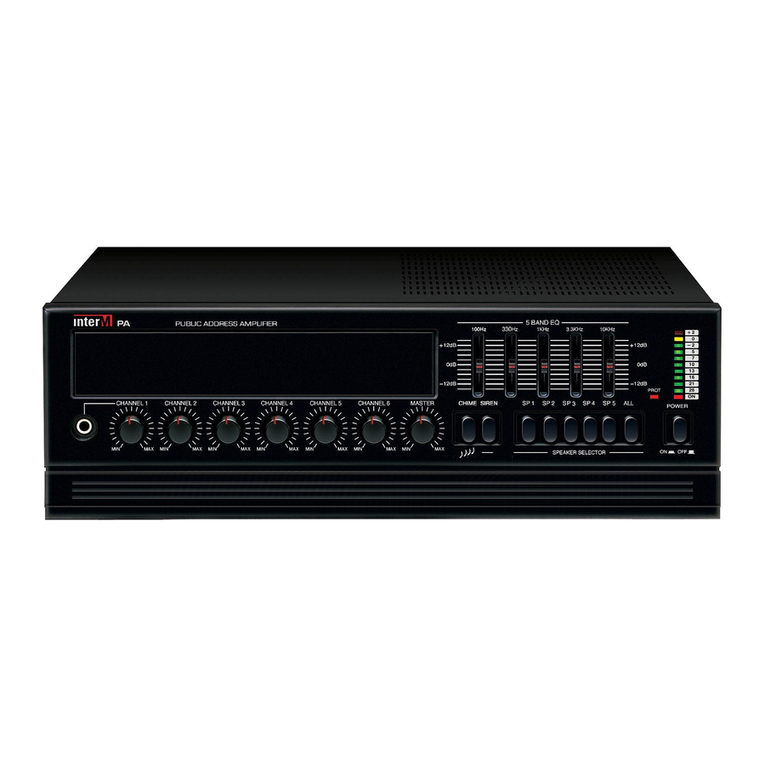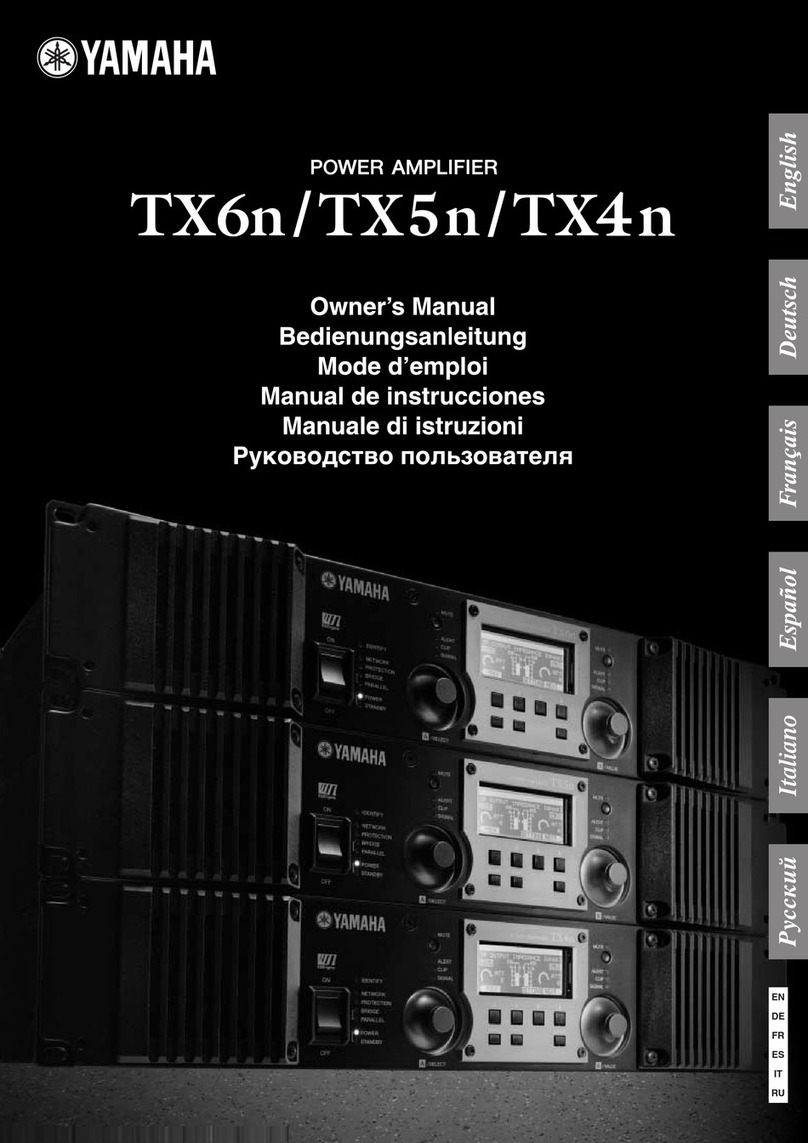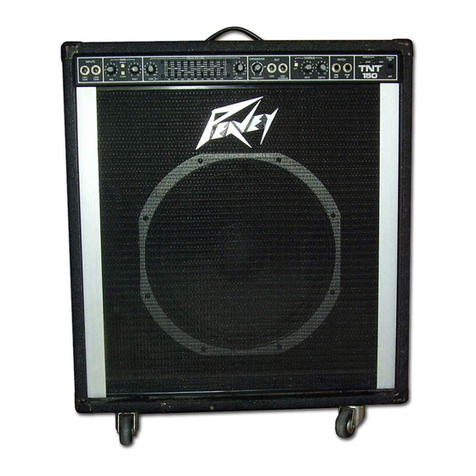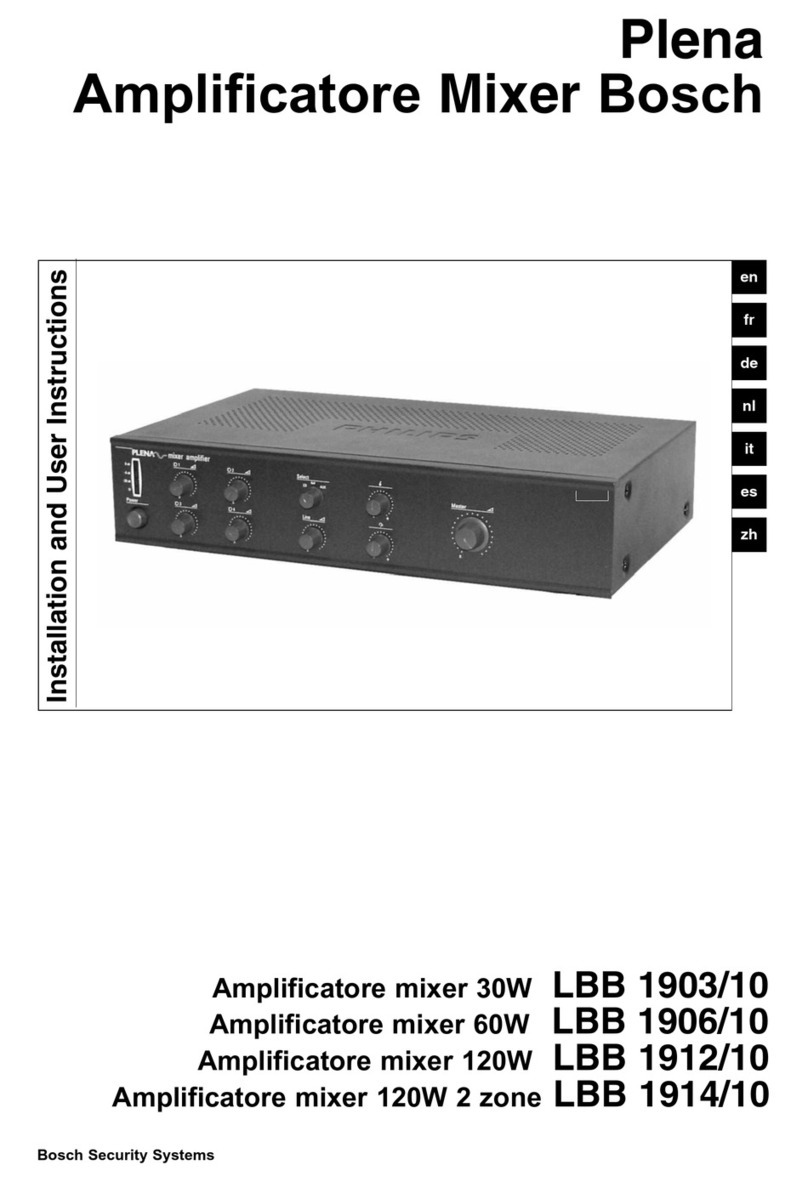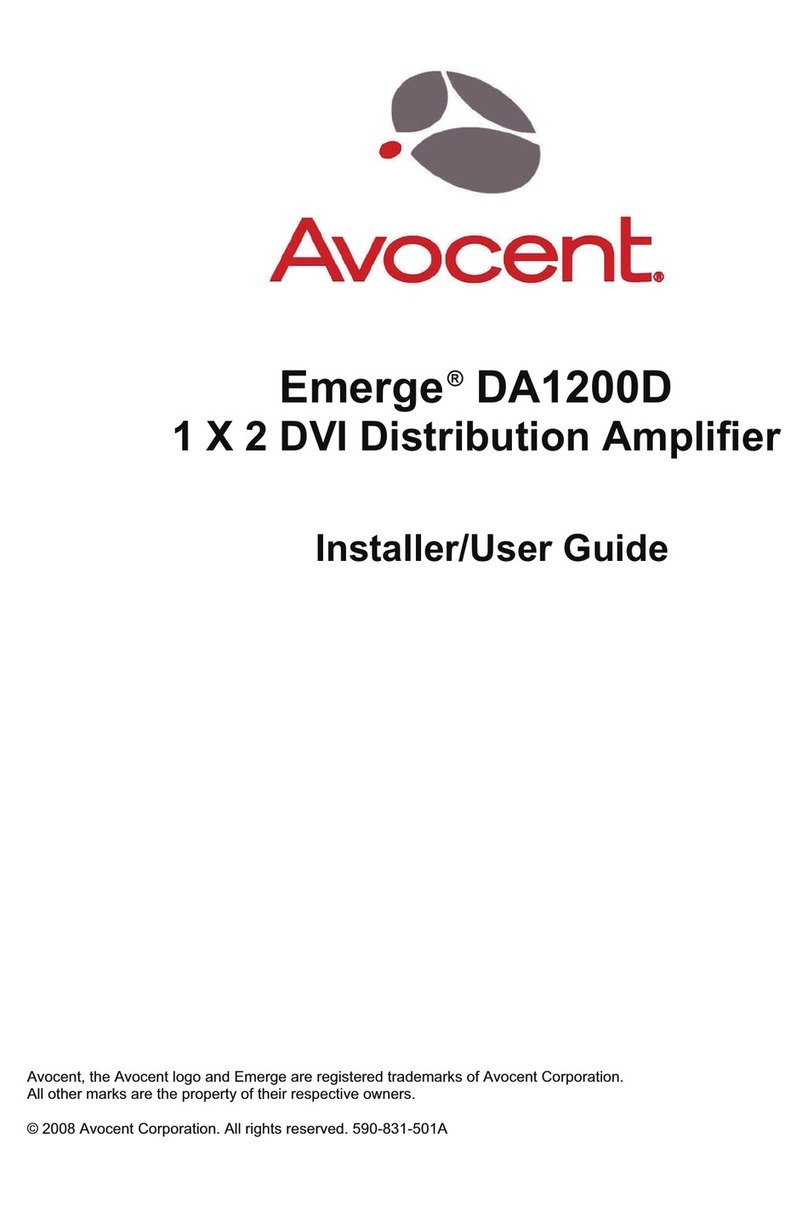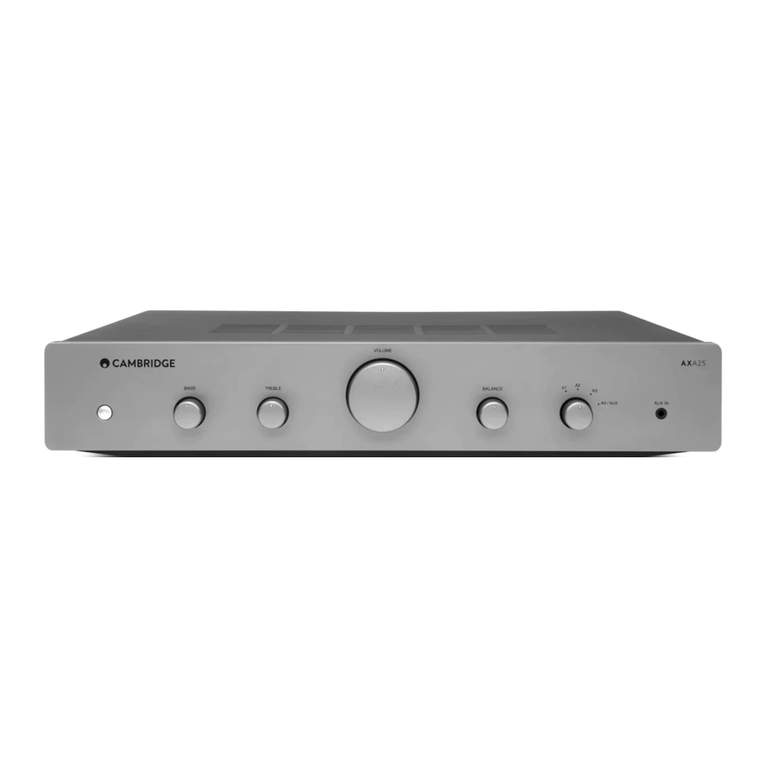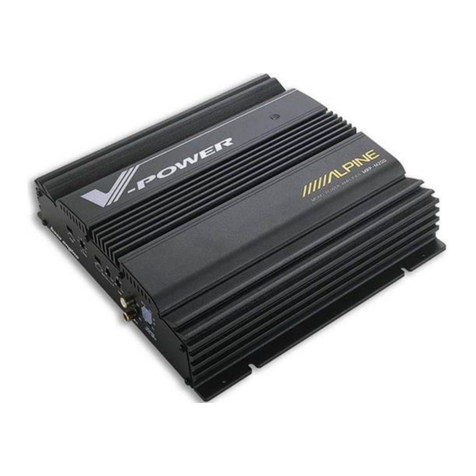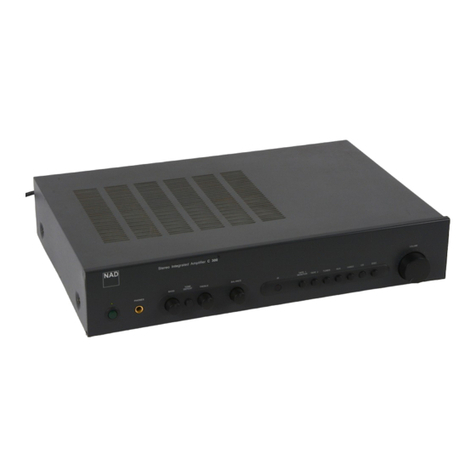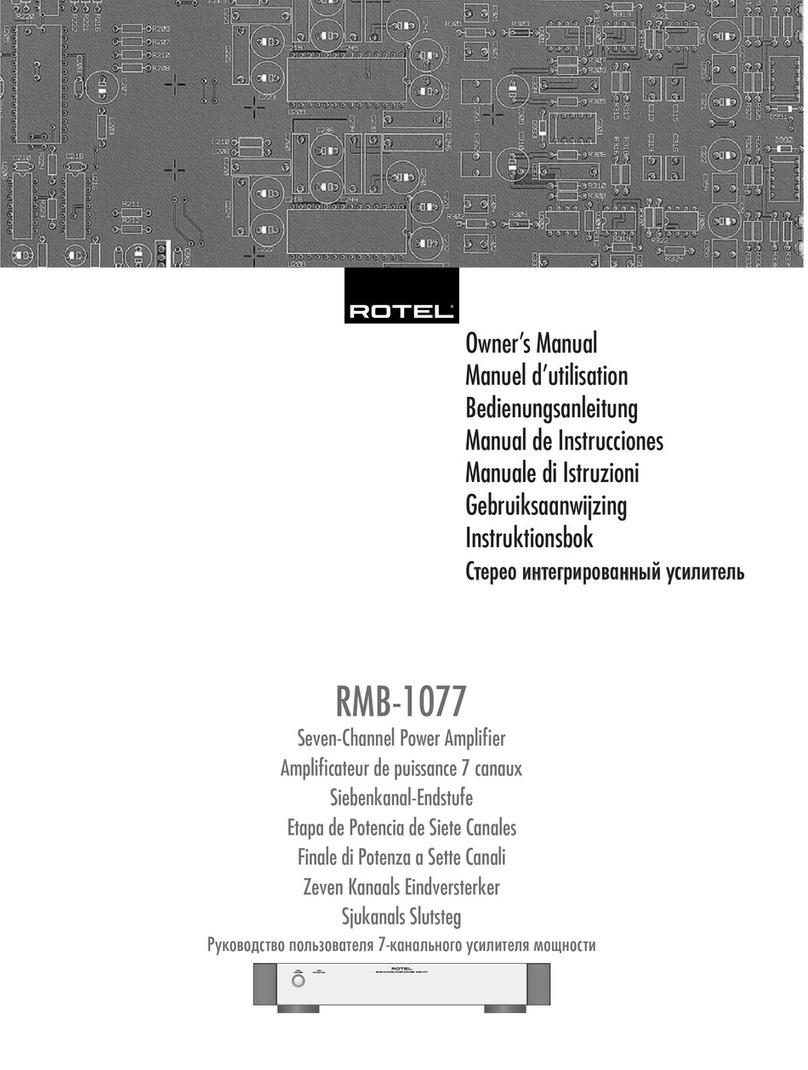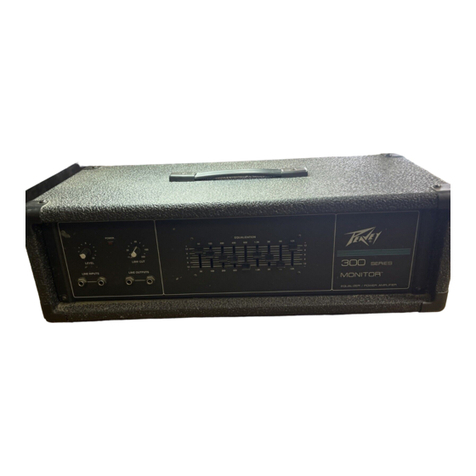INSTALLATION (continued)
3. Make sure the wires are firmly seated in each Weco
2-pin connector and that each screw is completely
tightened. Insert the wired connectors into the POWER
sockets on the amplifier. Press each one in until it stops.
4. Using the Weco 5-pin connector, connect a blue wire
from the source unit’s remote connection to the REM
terminal. Depending on polarity requirements (e.g.,
bridged-mono or tri-mode configurations –see Figures
1 through 3 on page 3), connect speaker wires from
the speakers to the L and R (+ and –) terminals, as
required by your system plan.
5. Make sure the wires are firmly seated in the Weco 5-pin
connector and that each screw is completely tightened.
Insert the wired Weco 5-pin connector into the 5-pin
socket on the amplifier. Press it in until it stops.
6. Connect RCA cables from a source unit to the L and R
INPUT jacks.
SETTING THE CROSSOVER...
IMPORTANT: If you plan to use the Kappa 202a to drive
full-range speakers, set both AMP and AUX filters to
FLAT (refer to Figure 1 on page 3 and Figure 8 below)
and skip to the next section, “Setting Input Sensitivity”.
1. Set the CROSSOVER control to the frequency
recommended by speaker manufacturer (refer to Figure
8). If the value is unknown, set the control midway.
Figure 8. Kappa 202a controls for crossover, input, output, and
DBO (Dynamic Bass Optimizer).
2. Depending on your system plan, set the AMP and
AUX switches to LP (low-pass), HP (high-pass), or
FLAT (refer to Figure 8).
SETTING INPUT SENSITIVITY...
Initially, turn the input sensitivity GAIN control to its
minimum (counter-clockwise) position (refer to Figure 8).
1. Reconnect the (–) negative lead to your vehicle’s
battery. Apply power to the audio system and play a
favorite music track from CD or tape.
NOTE: After the source unit is on, green LEDs (on the top
pane)l will illuminate, indicating the amplifier is on. If not,
check the wiring, especially the remote connection from the
source unit. Also refer to “Troubleshooting”on the next page.
2. On the source unit, increase the volume control to
maximum position. Slowly increase the GAIN control
(clockwise) towards three o’clock and, at the same
time, listen to the quality of the reproduced sound. At
some point, you’ll hear distortion on the music peaks.
Stop the adjustment and turn it back slightly.
SETTING DBO...
Dynamic Bass Optimizer (DBO) is a new approach to
enhancing low-frequency reproduction in a vehicle.
Conventional bass boost controls add bass at a fixed
frequency and cause the amplifier to consume
considerable power. DBO conserves valuable power at
the lowest frequencies and allows you to adjust the level
and “character”of the bass sound, instead of just the
amount of boom.
Since a subwoofer in a tuned box is given to overexcursion
below the tuned frequency, set the FREQ control below
the box’s resonant (tuned) frequency (see Figure 9 on the
next page). Power typically wasted in this region will now
be conserved and instead be available for frequencies the
enclosure will reproduce. Use the Q control to boost the
bass at the set frequency by as much as 12 dB (at MAX
position –see Figure 9 on the next page).
For sealed enclosures, use DBO to enhance the output so
it sounds more like a tuned box. This is a result of 12 dB
of rolloff being added to the enclosure’s rolloff and a
flattening of frequency response (at the curve’s knee)
when Q is boosted.
For infinite baffles, set the FREQ control to the speaker’s
Fsvalue (to keep the subwoofer from trying to create bass
below the resonant frequency) and adjust the Q control
according to personal taste.
INSTALLING THE CONTROL COVER...
After wiring and testing the Kappa 202a amplifier, install
the control cover using the enclosed machine screws to
deter tampering and help seal out dust.
NOTE: Do not over-tighten the machine screws. Doing so may
crack the cover.
